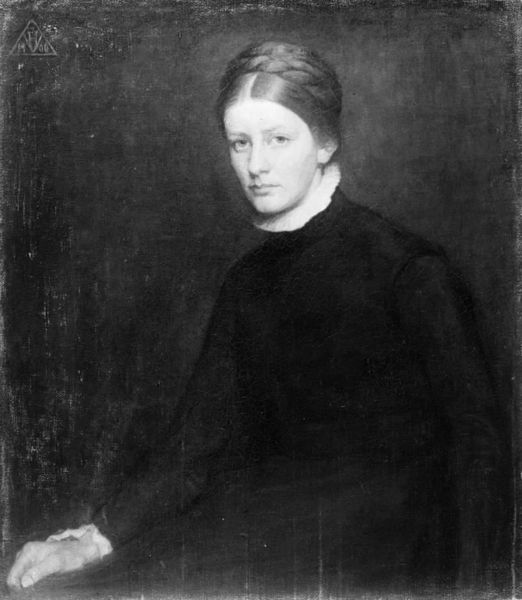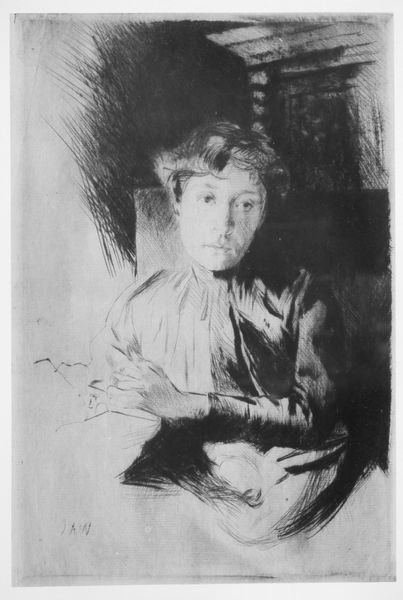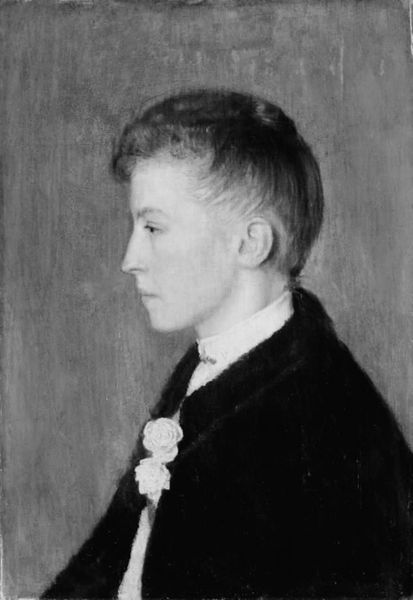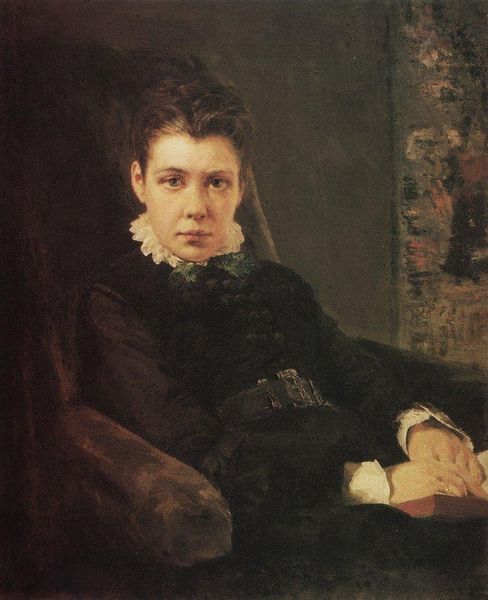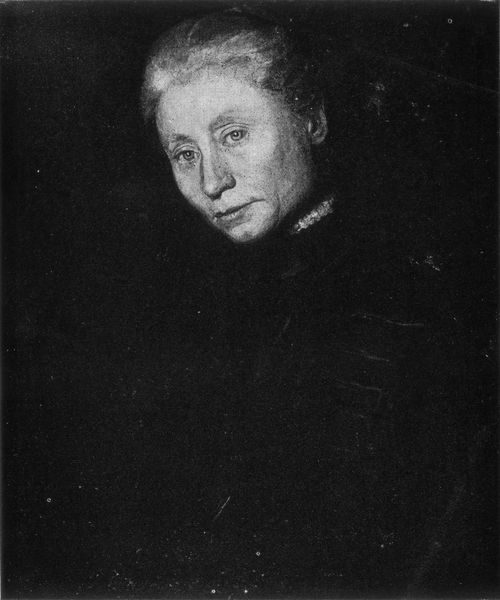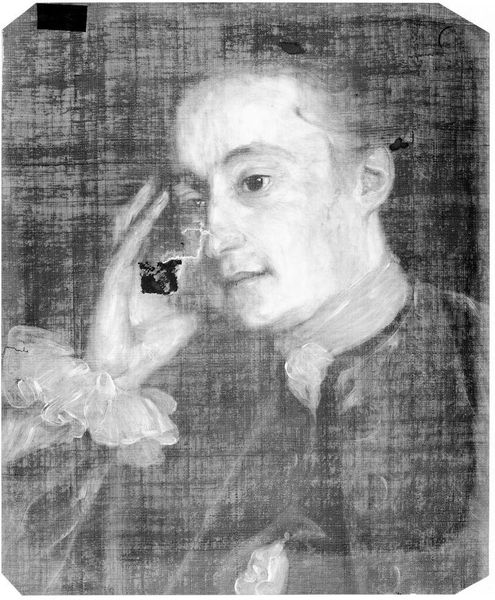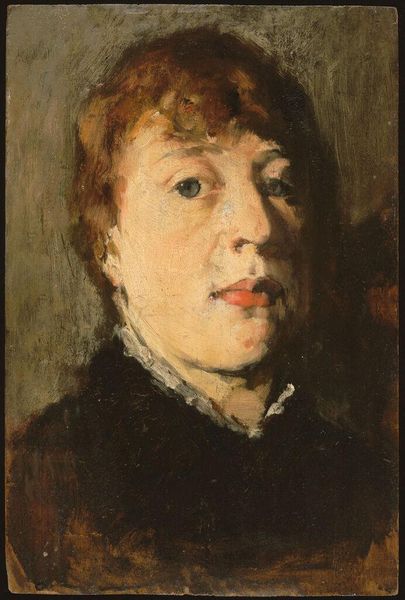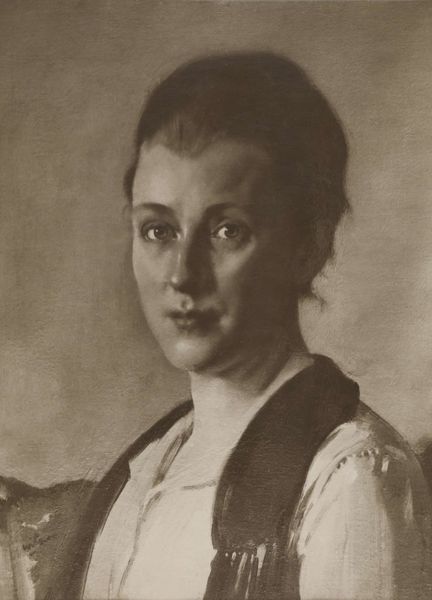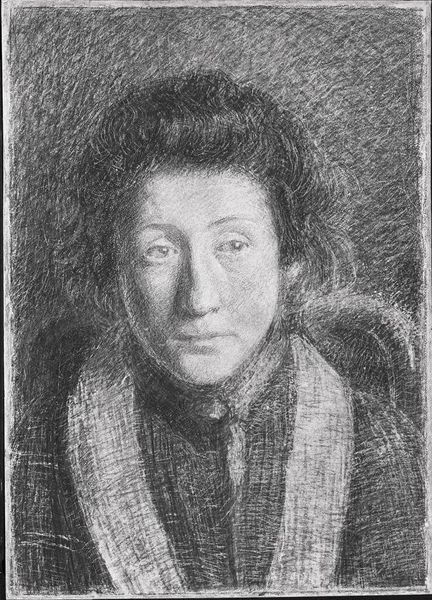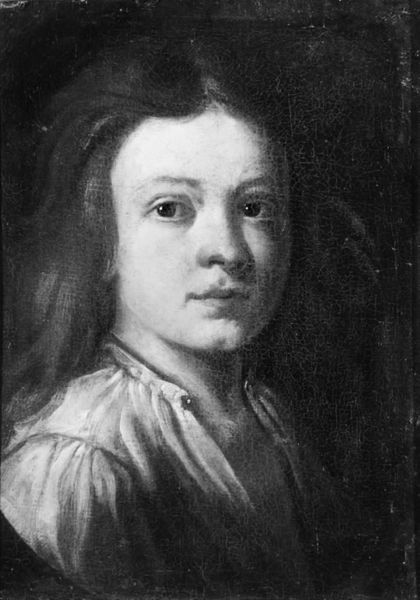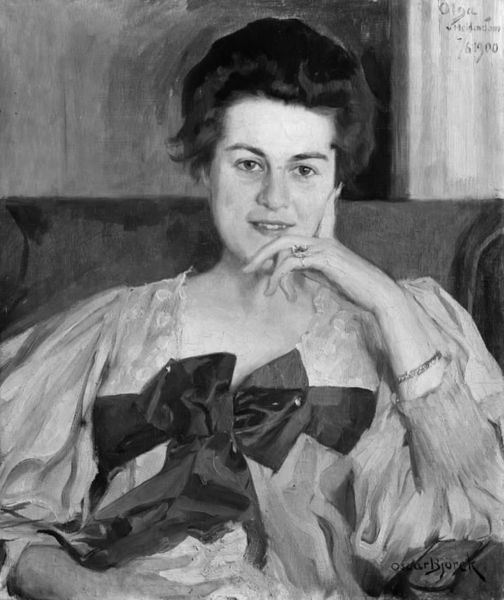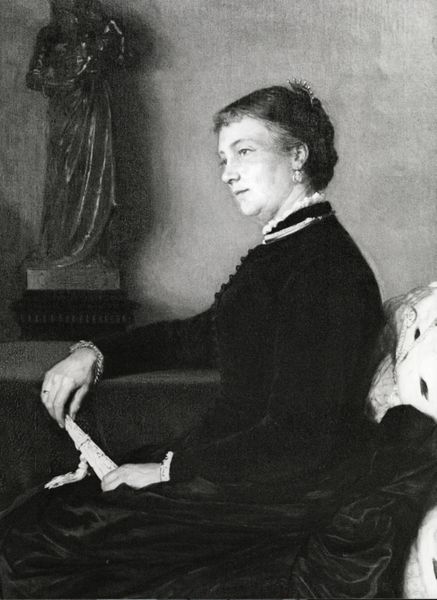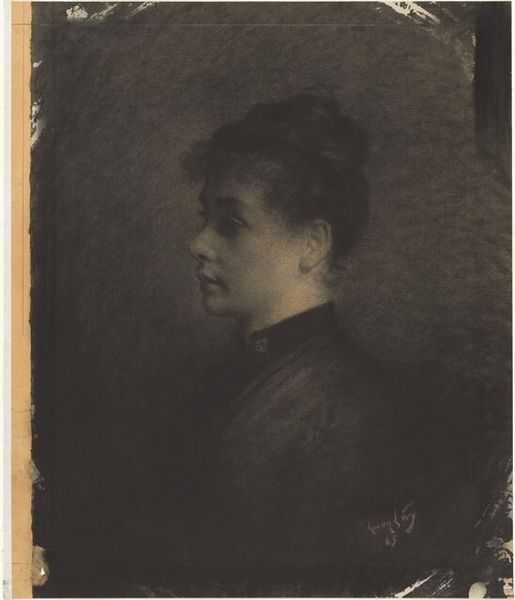
Dimensions: 57.5 cm (height) x 50 cm (width) (Netto)
Editor: So, this is "Kvindeportræt. London," a portrait by P.A. Schou from 1898, rendered in oil paint. It's quite stark, isn't it? Very direct. What do you make of it? Curator: I find the image deeply compelling because of its directness, as you mentioned. The way the artist uses impasto creates a textured surface, which enriches the face and emphasizes a specific emotional gravity. Notice how her gaze is unyielding, and seemingly meant to engage you directly. Have you considered the symbolism behind her stern composure? Editor: No, I hadn't really. Is it connected to societal expectations of women at the time, perhaps? Curator: Exactly! During the late 19th century, portraiture was often used to convey status, power, or idealized beauty, yet this work defies that expectation by capturing an undeniable naturalism, hinting at introspection. Her clothing is a symbol for belonging, and this can either denote exclusion, or that she belongs. Editor: So it's almost a commentary on the limited roles available to women and the internal struggle it implies? Curator: Precisely. The choice of impasto, applying thick layers of paint, suggests both vulnerability and resilience of those boundaries. It encourages reflection on societal pressures but equally recognizes resistance to social codes. Do you perceive an aspect of subtle rebellion? Editor: Yes, I see that now, in her eyes and in the lack of ornamentation in dress, and in the strength of her unyielding face! Curator: It becomes apparent the symbols in this portrait transcend the merely representational and touch something deeply rooted about societal tension. Editor: This conversation gave me a much greater appreciation for not only this specific work, but also portraits from this era, so, thank you!
Comments
No comments
Be the first to comment and join the conversation on the ultimate creative platform.
